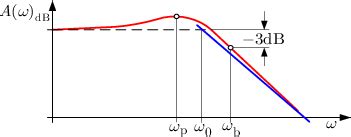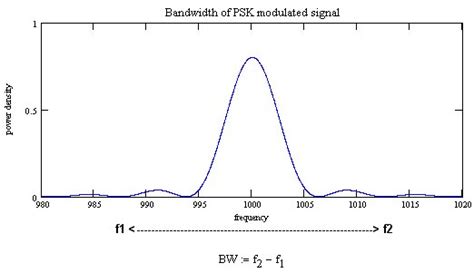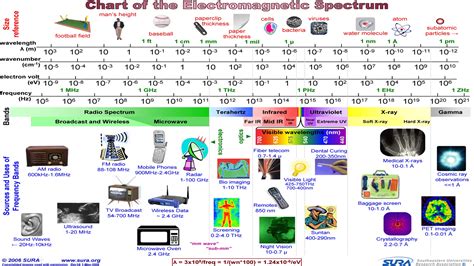Understanding Frequency and Bandwidth
In the world of high-speed communication systems, frequency and bandwidth are two critical concepts that play a vital role in determining the performance and capabilities of these systems. Frequency refers to the number of cycles or oscillations per second of an electromagnetic wave, measured in Hertz (Hz). Bandwidth, on the other hand, is the range of frequencies that a communication system can effectively transmit or receive.
The Electromagnetic Spectrum
The electromagnetic spectrum is the range of all possible frequencies of electromagnetic radiation. It encompasses everything from low-frequency radio waves to high-frequency gamma rays. The following table provides an overview of the different regions of the electromagnetic spectrum:
| Region | Frequency Range | Wavelength Range |
|---|---|---|
| Radio Waves | 3 Hz to 300 GHz | 100 km to 1 mm |
| Microwaves | 300 MHz to 300 GHz | 1 m to 1 mm |
| Infrared | 300 GHz to 400 THz | 1 mm to 750 nm |
| Visible Light | 400 THz to 790 THz | 750 nm to 380 nm |
| Ultraviolet | 790 THz to 30 PHz | 380 nm to 10 nm |
| X-rays | 30 PHz to 30 EHz | 10 nm to 0.01 nm |
| Gamma Rays | > 30 EHz | < 0.01 nm |
High-Speed Communication Systems
High-speed communication systems typically operate in the microwave and radio wave regions of the electromagnetic spectrum. These systems are designed to transmit and receive large amounts of data over long distances at high speeds. Some examples of high-speed communication systems include:
- Fiber optic networks
- Satellite communication systems
- Wireless broadband networks (e.g., 4G, 5G)
- High-frequency trading networks
Factors Affecting Frequency Range and Bandwidth
Several factors influence the frequency range and bandwidth of high-speed communication systems. Understanding these factors is crucial for designing and optimizing these systems for maximum performance.
Transmission Medium
The transmission medium is the physical substance through which the electromagnetic waves propagate. Different transmission media have varying characteristics that affect the frequency range and bandwidth of the communication system. For example:
- Copper wire: Limited bandwidth due to signal attenuation and distortion at high frequencies.
- Fiber optic cable: Extremely high bandwidth and low signal loss, enabling long-distance, high-speed data transmission.
- Free space (wireless): Bandwidth depends on the allocated frequency spectrum and is subject to interference and signal attenuation.
Modulation Techniques
Modulation is the process of encoding information onto a carrier wave for transmission. The choice of modulation technique can significantly impact the frequency range and bandwidth of a communication system. Some common modulation techniques include:
- Amplitude Modulation (AM): Simple technique with limited bandwidth efficiency.
- Frequency Modulation (FM): Offers better noise immunity than AM but requires more bandwidth.
- Phase Modulation (PM): Similar to FM, with better bandwidth efficiency.
- Quadrature Amplitude Modulation (QAM): Combines AM and PM to achieve high bandwidth efficiency.
Signal Processing Techniques
Signal processing techniques are used to optimize the performance of communication systems by minimizing noise, interference, and distortion. These techniques can help to increase the effective bandwidth and improve the signal-to-noise ratio (SNR) of the system. Some common signal processing techniques include:
- Equalization: Compensates for signal distortion caused by the transmission medium.
- Forward Error Correction (FEC): Adds redundant data to the transmitted signal to enable error detection and correction at the receiver.
- Adaptive Filtering: Dynamically adjusts filter parameters to optimize signal quality based on changing channel conditions.

Bandwidth Allocation and Management
Efficient allocation and management of bandwidth are essential for ensuring the optimal performance of high-speed communication systems. This involves strategies for dividing the available frequency spectrum among multiple users or services and preventing interference between adjacent channels.
Frequency Division Multiplexing (FDM)
FDM is a technique for sharing the available bandwidth among multiple users or services by assigning each a unique frequency band. This allows multiple signals to be transmitted simultaneously over the same transmission medium without interfering. Some examples of FDM-based systems include:
- Broadcast radio and television
- Satellite communication systems
- Cellular networks (e.g., GSM, CDMA)
Time Division Multiplexing (TDM)
TDM is another method for sharing bandwidth, where each user or service is allocated a specific time slot for transmission. During each time slot, the entire bandwidth is available to the assigned user or service. Examples of TDM-based systems include:
- Digital telephony networks (e.g., ISDN)
- Satellite communication systems
- Some wireless networks (e.g., TDMA)
Code Division Multiple Access (CDMA)
CDMA is a spread-spectrum technique that allows multiple users to transmit simultaneously over the same frequency band by assigning each user a unique code. The receiver uses the known code to separate the desired signal from other users’ signals. CDMA is used in various communication systems, such as:
- 3G cellular networks (e.g., UMTS, CDMA2000)
- GPS navigation systems
- Some wireless local area networks (WLANs)

Challenges in High-Speed Communication Systems
Designing and implementing high-speed communication systems comes with several challenges that must be addressed to ensure optimal performance and reliability.
Signal Integrity
Signal integrity refers to the quality of the transmitted signal and its ability to be accurately received and interpreted by the receiver. Factors that can degrade signal integrity include:
- Attenuation: The loss of signal strength as it propagates through the transmission medium.
- Distortion: Changes in the shape of the signal due to the non-ideal characteristics of the transmission medium or components.
- Crosstalk: Interference caused by signals from adjacent channels or circuits.
Ensuring signal integrity requires careful design of the communication system, including the selection of appropriate materials, components, and signal processing techniques.
Synchronization
Synchronization is the process of ensuring that the transmitter and receiver are operating in lockstep, with the same timing and frequency references. Poor synchronization can lead to data loss, errors, and reduced system performance. Techniques for maintaining synchronization include:
- Clock recovery: Extracting the timing information from the received signal to synchronize the receiver’s clock with the transmitter’s clock.
- Framing: Organizing the transmitted data into frames with synchronization markers to help the receiver maintain alignment.
- Frequency and phase locking: Adjusting the receiver’s oscillator to match the frequency and phase of the transmitter’s oscillator.
Interference and Noise
Interference and noise are unwanted signals that can disrupt the transmission and reception of the desired signal. Sources of interference and noise include:
- Adjacent channel interference: Interference caused by signals from nearby frequency bands.
- Co-channel interference: Interference caused by signals from other users or systems sharing the same frequency band.
- Thermal noise: Random noise generated by the thermal motion of electrons in electronic components.
- Electromagnetic interference (EMI): Interference caused by external electromagnetic sources, such as power lines or other electronic devices.
Mitigating the effects of interference and noise requires a combination of appropriate frequency allocation, modulation techniques, and signal processing methods.

Future Trends in High-Speed Communication Systems
As the demand for high-speed data transmission continues to grow, new technologies and approaches are being developed to meet these requirements.
5G and Beyond
5G is the fifth generation of cellular network technology, designed to provide higher data rates, lower latency, and increased connectivity compared to previous generations. Key features of 5G include:
- Millimeter-wave (mmWave) frequencies: Utilizing higher frequency bands (24 GHz and above) to achieve greater bandwidth and data rates.
- Massive MIMO: Employing large numbers of antennas at the base station and mobile devices to improve signal quality and capacity.
- Network slicing: Creating virtual, logically isolated networks within the same physical infrastructure to cater to different use cases and requirements.
Research is already underway for the development of 6G, which aims to further enhance the capabilities of wireless communication systems.
Terahertz Communication
Terahertz (THz) communication involves using frequencies in the range of 100 GHz to 10 THz for data transmission. This region of the electromagnetic spectrum offers the potential for extremely high data rates and capacity. However, THz communication faces challenges such as high signal attenuation and the need for advanced materials and components.
Optical Wireless Communication
Optical wireless communication (OWC) uses visible or infrared light to transmit data wirelessly. OWC systems can offer high bandwidth, low latency, and improved security compared to radio frequency-based systems. Examples of OWC technologies include:
- Li-Fi: Uses visible light from LED lamps to transmit data, enabling high-speed communication in indoor environments.
- Free-space optical communication: Employs laser beams to transmit data over long distances, such as between satellites or terrestrial stations.
Frequently Asked Questions (FAQ)
1. What is the difference between frequency and bandwidth?
Frequency refers to the number of oscillations or cycles per second of an electromagnetic wave, measured in Hertz (Hz). Bandwidth is the range of frequencies that a communication system can effectively transmit or receive.
2. What factors affect the frequency range and bandwidth of a communication system?
The frequency range and bandwidth of a communication system are influenced by factors such as the transmission medium, modulation techniques, and signal processing methods employed.
3. What is the role of modulation in high-speed communication systems?
Modulation is the process of encoding information onto a carrier wave for transmission. The choice of modulation technique can impact the frequency range, bandwidth efficiency, and noise immunity of a communication system.
4. How can interference and noise be mitigated in high-speed communication systems?
Interference and noise can be mitigated through techniques such as appropriate frequency allocation, modulation techniques, and signal processing methods like equalization, forward error correction, and adaptive filtering.
5. What are some emerging technologies in high-speed communication systems?
Some emerging technologies in high-speed communication systems include 5G and beyond, terahertz communication, and optical wireless communication technologies like Li-Fi and free-space optical communication.
In conclusion, understanding high-speed frequency range and bandwidth is crucial for designing, implementing, and optimizing high-speed communication systems. By considering factors such as transmission medium, modulation techniques, and signal processing methods, engineers can develop systems that deliver reliable, high-performance data transmission. As new technologies emerge, the field of high-speed communication will continue to evolve, enabling even faster and more efficient data transfer in the future.

No responses yet